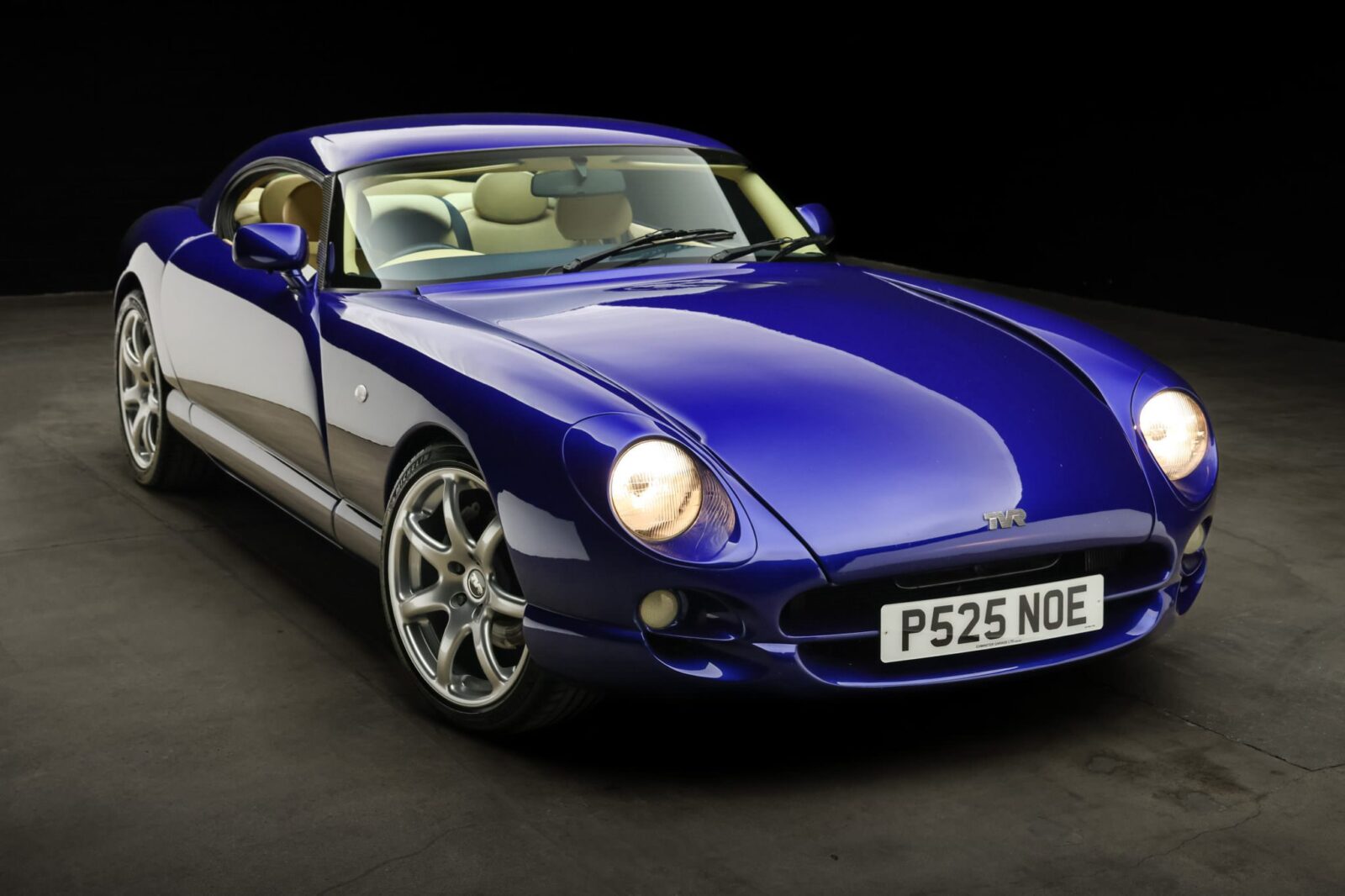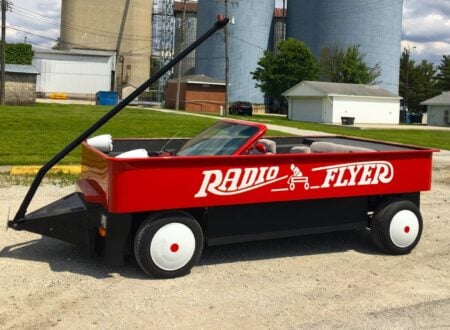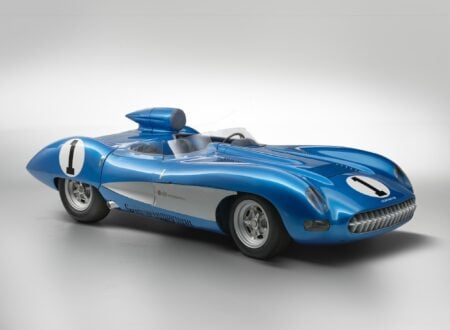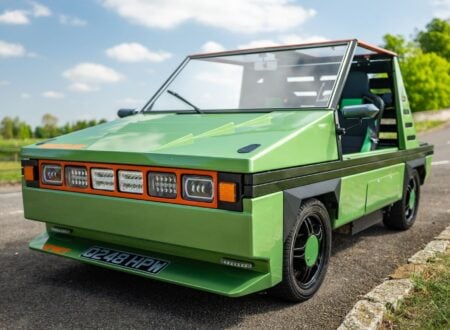The Cerbera was released in 1996 by the low-volume British automaker TVR as their first true mass-market GT car, offering 2+2 seating, a fixed roof, and an in-house developed V8 engine.
The Cerbera has been described as both a grand touring (GT) car and a sports car, and it does effectively fill both categories, offering an opulently fitted out, spacious interior combined with razor sharp handling and a top speed of over 185 mph.
Fast Facts – The TVR Cerbera
- The TVR Cerbera was introduced in 1996, marking a significant evolution in TVR’s lineup with its name derived from Cerberus, the three-headed beast of Greek mythology that guarded the entrance to Hades.
- The Cerbera would arguably be the most important TVR of its time, offering the mass-market appeal of 2+2 seating, additional trunk space, a fixed hardtop roof, and for the first time, an engine developed in-house at TVR.
- The car used a new tubular steel backbone chassis, it was fitted with independent front and rear suspension, four wheel disc brakes, and a lightweight fiberglass body. Power was provided by the AJP8, better known as the TVR “Speed Eight” engine that had been developed by Al Melling, an engineer who had previously worked in Formula 1 with Lamborghini, Chevrolet, Leyton House, and Benetton.
- The TVR Cerbera would be sold from 1996 until 2006, almost 1,500 of them would be built in total powered by either the TVR Speed Eight or the TVR Speed Six engine. Today they offer a reasonably affordable entry point into modern classic GT car ownership, with a fascinating history and considerably more rarity than your run of the mill BMW or Jaguar from the same era.
The Origins Of The TVR Cerbera
The TVR Cerbera was developed in the early 1990s as a new vehicle for the British sports car marque that would have genuine mass-market appeal. Whereas TVRs were famous at the time for being roaring, hairy-chested sports cars with two seats, no fixed roof, and limited practicality, the arrival of the Cerbera would signal a fundamental shift – it was a car that could be used by a family (with a maximum of two kids) year-round.
Above Video: This is the original Top Gear review of the TVR Cerbera by Jeremy Clarkson, it’s clear that he’s a huge fan of the car, specifically its engine and handling. He called it the “noisiest, most exciting, and fastest car this side of a Lamborghini Diablo.”
Initially, the Cerbera was developed as a styling exercise by TVR’s designers. The initial sketches looked promising, and a full-scale foam mockup was approved. Once the styling was more or less locked in, it was decided that a concept car would be built and shown at the 1993 London Motor Show – just a few short months away at the time.
The car was completed and displayed on the TVR stand where it attracted a flood of attention. Pre-orders began to flood in and by 1994 the car was in the pre-production design phase, it was then displayed again at the 1994 Birmingham Motor Show which resulted in hundreds of additional orders.
The original plan had been to use the pre-exiting TVR Power Rover V8 engine in the car, the same unit being used in both the Griffith and Chimaera that was based on the Rover V8, which itself was based on the Buick 215 V8 from the early 1960s.
At some point during development, the plans for the engine changed. It was decided that TVR would hire engineer Al Melling to develop an entirely new V8 for the car, a modern engine that would power the Cerbera and become TVR’s first in-house engine design.
Melling is very well known in racing circles, having designed engines for Norton on a number of Formula 1 projects for the likes of Lamborghini, Chevrolet, Leyton House, and Benetton. He would work on a number of incredible projects over the following years, nearly buying out Rolls-Royce with a consortium of investors, and he developed his own sports car – the Melling Wildcat.
The Melling-designed engine would be internally called the AJP8 after the names of Al Melling, John Ravenscroft, and Peter Wheeler. Externally it would be called the TVR Speed Eight.
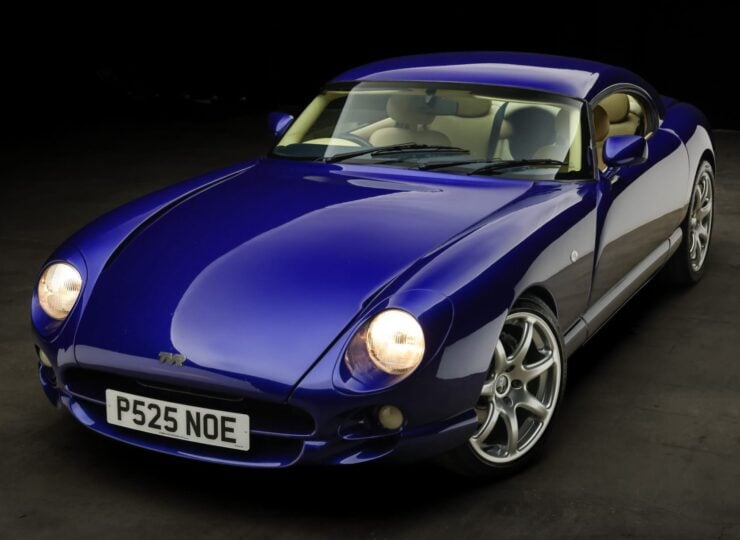

The engine was a 75º V8 with a single overhead cam per bank, an aluminum block and heads, a flat-plane crankshaft, and up to 440 bhp. It weighed just 121 kgs (267 lbs) and the block was so strong it could be used as a stressed member if required.
The Cerbera entered production in 1996, it had a new tubular steel backbone chassis, independent front and rear suspension, disc brakes on all four corners, a lightweight fiberglass body, a fixed roof, and seating for two adults up front, with two smaller seats in the rear.
Over the course of the production run the Cerbera would be offered with both the TVR Speed Eight and the later TVR Speed Six engine, with displacements ranging from 4.0 liters up to 4.5 liters, and power ranging from 350 bhp to 440 bhp. The company would sell almost 1,500 of them over 10 years between 1996 and 2006, and unusually for a GT car at the time the fastest examples could reach almost 200 mph.
The 1997 TVR Cerbera Shown Here
The car you see here is a 1997 right hand drive model finished in Imperial Blue Pearl over Magnolia leather upholstery, and it’s powered by the 4.2 liter version of the TVR Speed Eight engine, which produced 360 bhp and 320 lb ft of torque fresh from the factory.
It’s fitted with AP Racing disc brakes, 18″ alloy wheels, air conditioning, power windows, and a CD stereo – a respectable list by the standards of the 1990s.
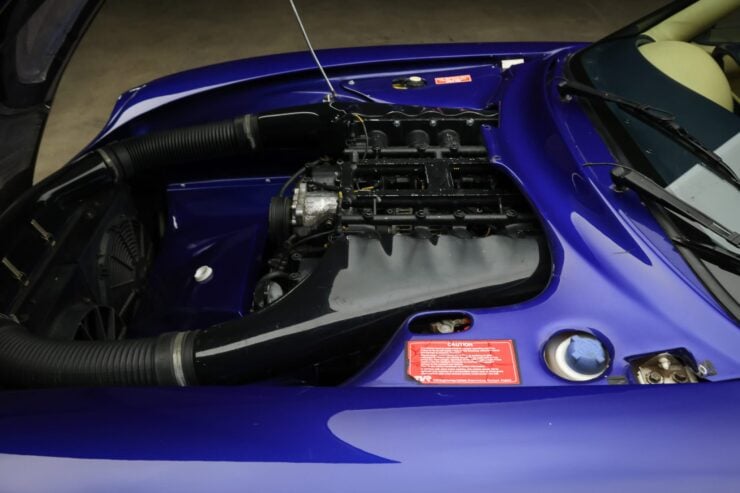

Some TVR interior color choices from this era can be a little galling, think bright green leather and oxblood carpeting, so the tasteful choice of a cream-like leather combined with black carpet in this car would be far easier to live with on a daily basis.
This Cerbera has just 11,000 miles showing on the odometer and it’s being offered for sale on Bring a Trailer out of Thousand Oaks, California with two key fobs, a spare set of taillights, and a Nevada title. If you’d like to read more about it or register to bid you can visit the listing here.
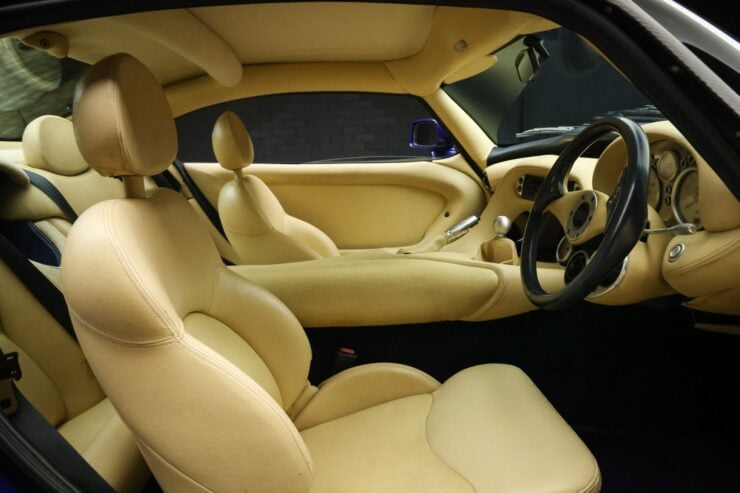
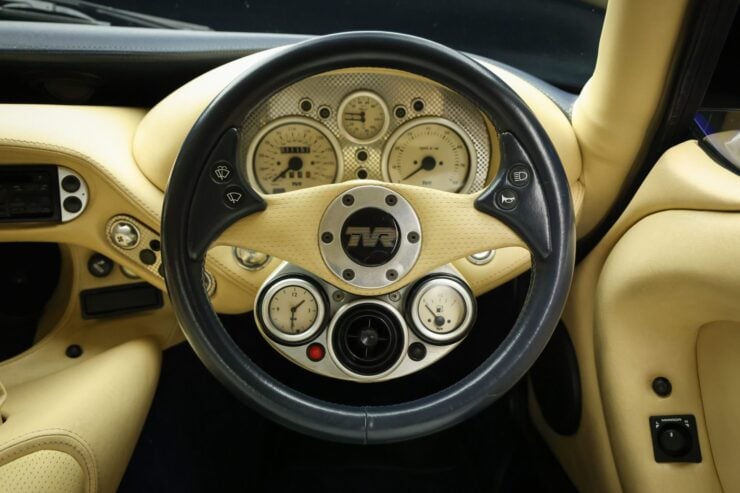
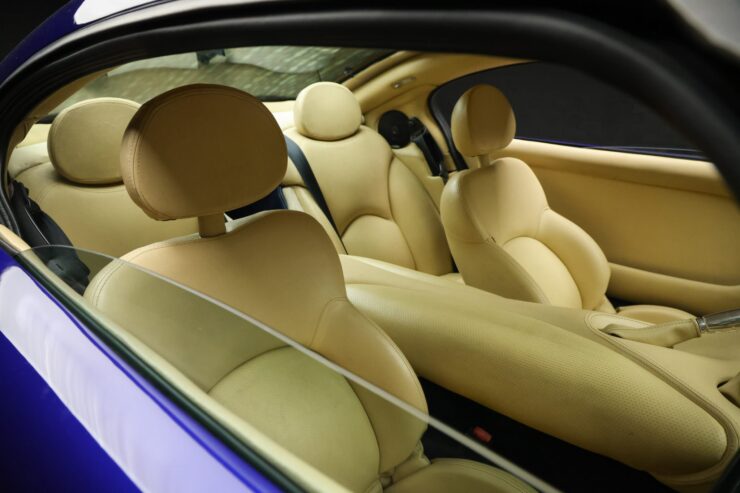
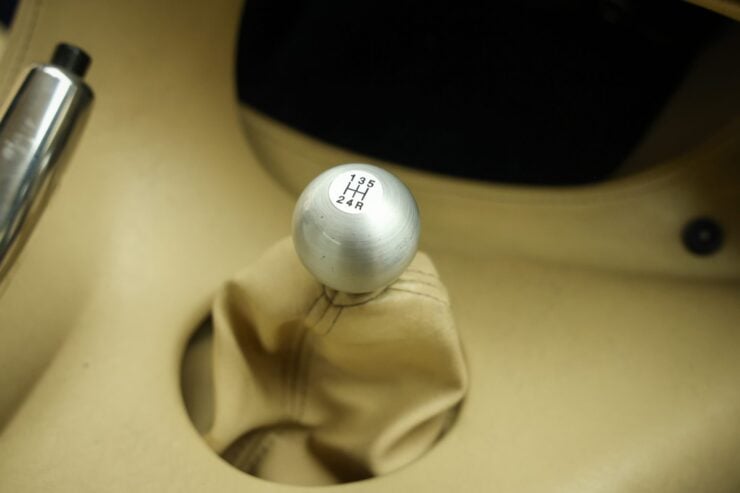
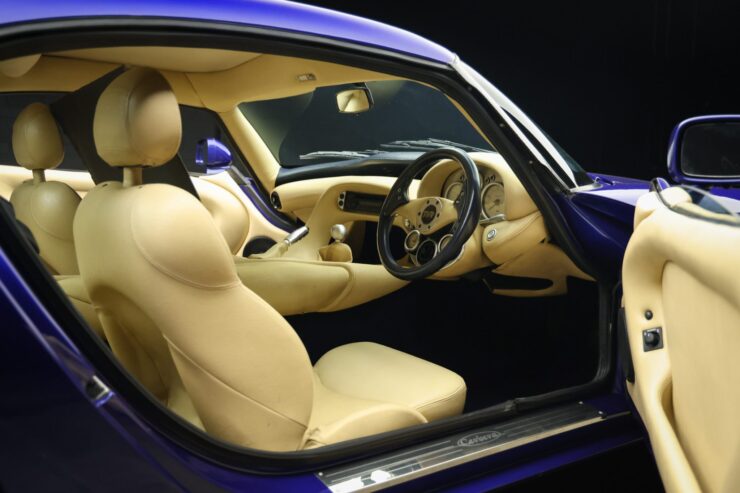

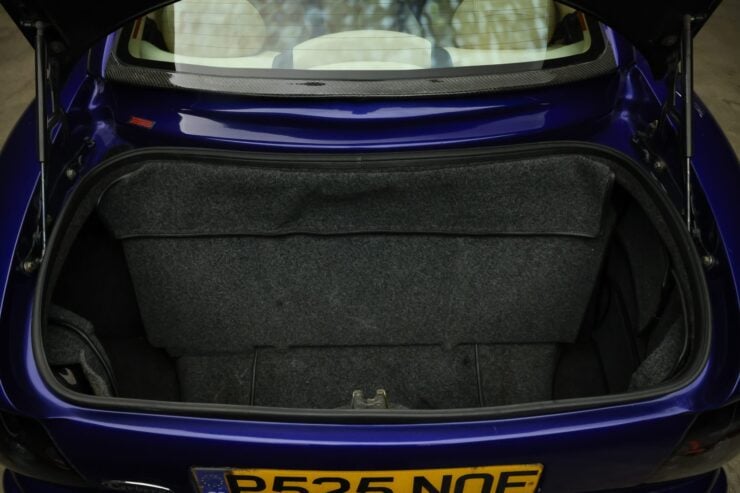
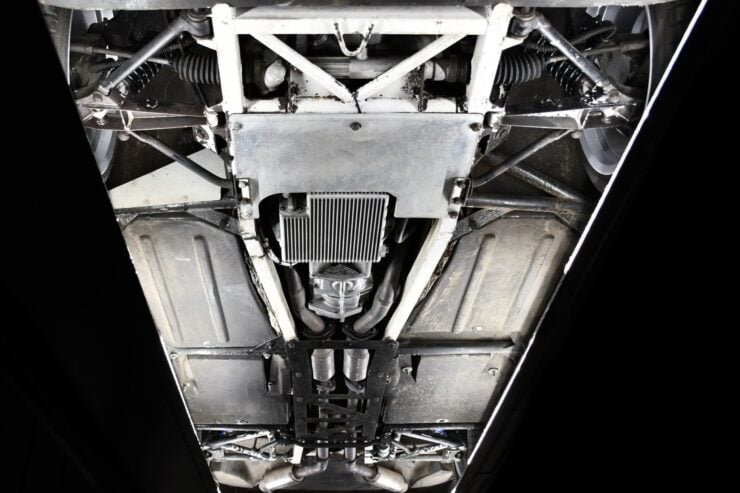
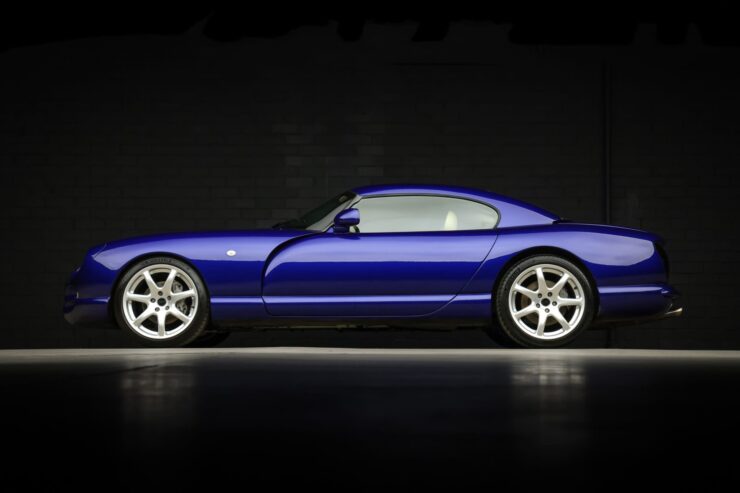
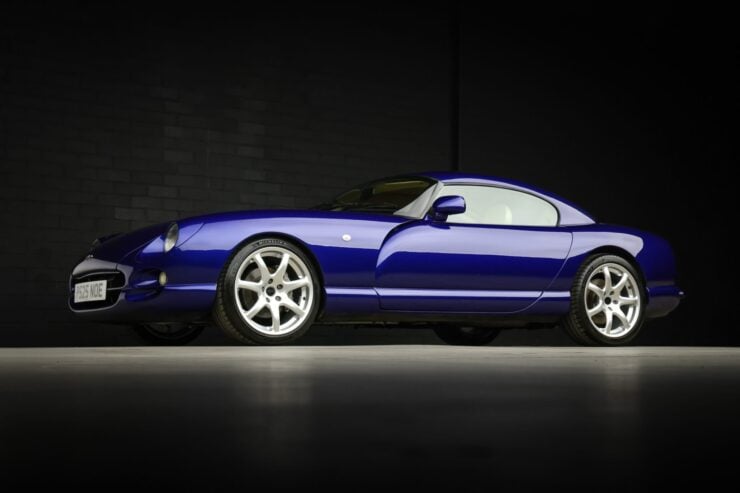
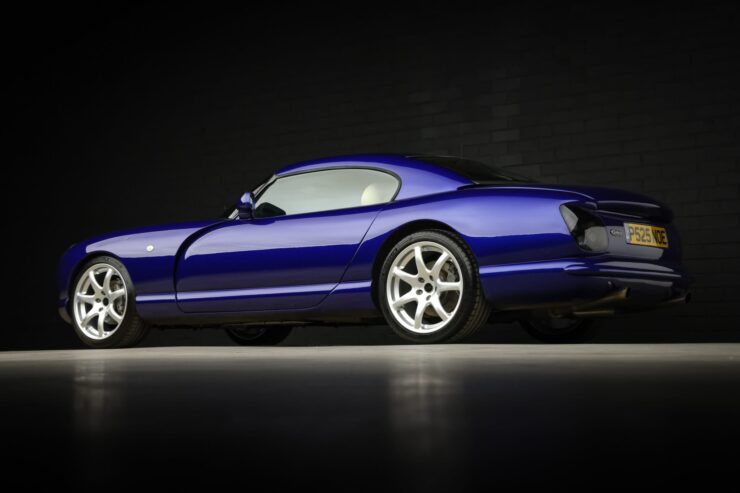
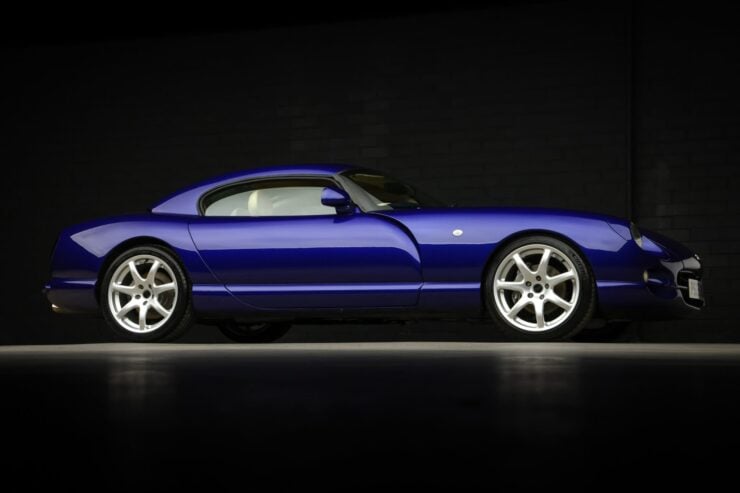
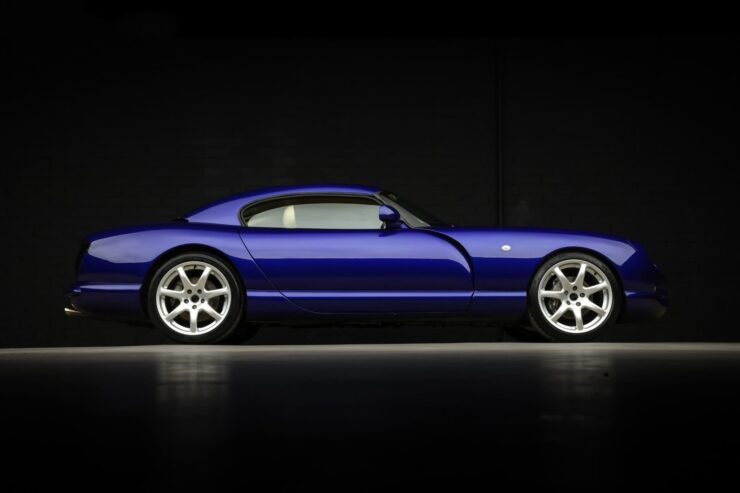
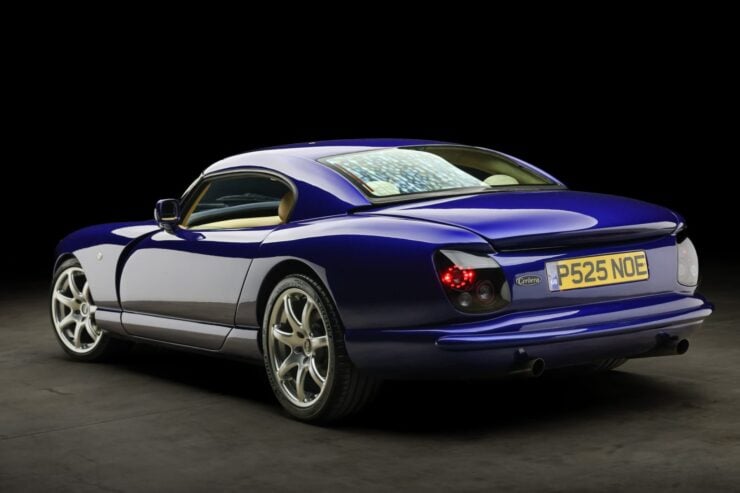
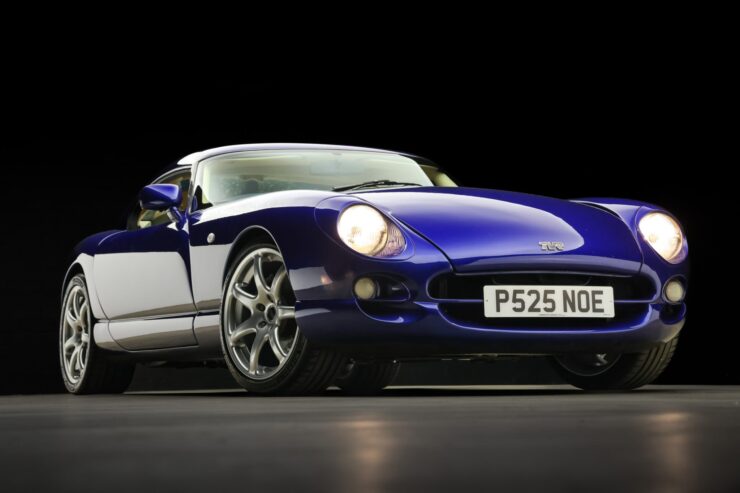
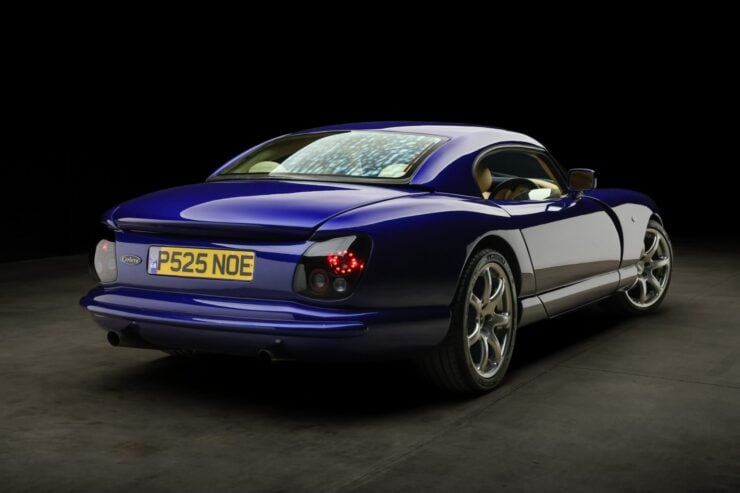
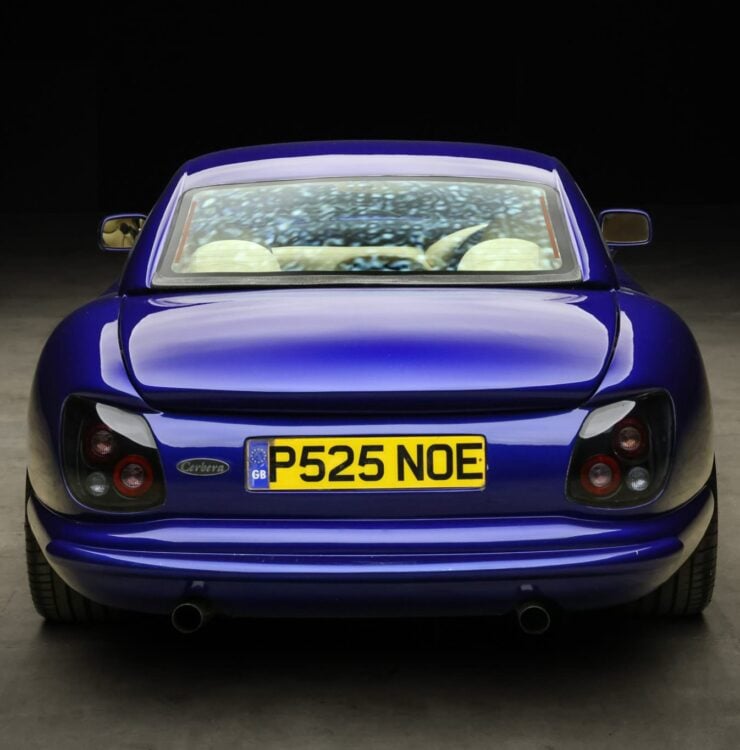
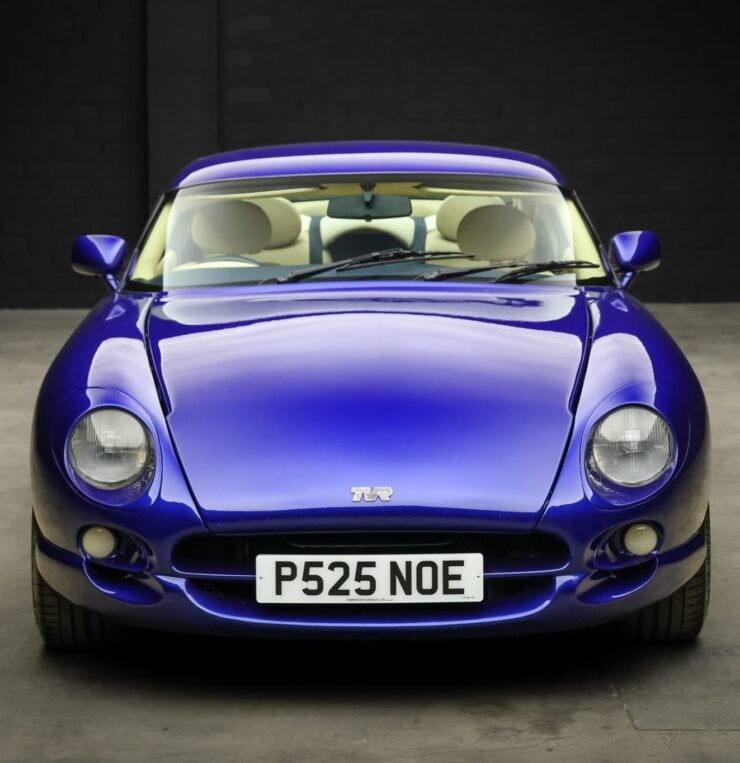
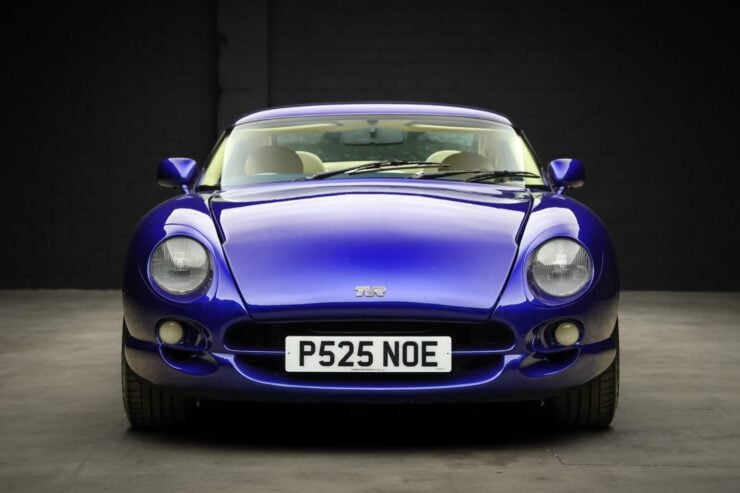
Images courtesy of Bring a Trailer

